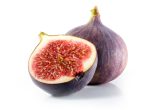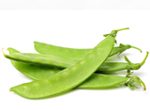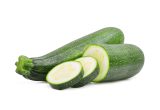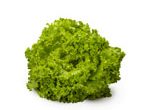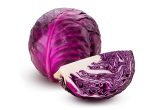Pepper (green)

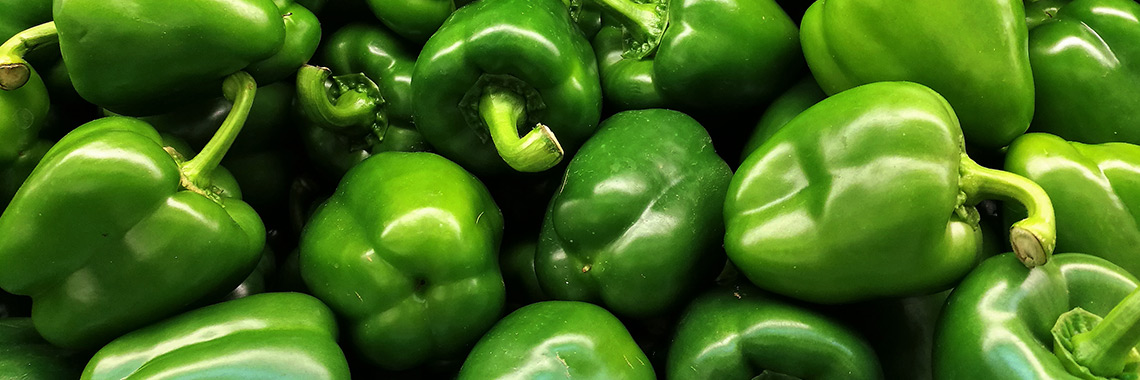
Description
- Green pepper (Capsicum annuum) belongs to the Solanaceae family. It comes from the same plant as the yellow and red pepper. These different colours are determined by the stage of ripening. Pepper is green when not yet ripe. As it ripens, it turns yellow, then orange, then red (Nolte, 2012).
- Pepper is the second most consumed vegetable in the world (Guo, 2014).
- It originates from tropical regions and is very sensitive to low temperatures, which affect its vegetative development (Guo, 2014).
PHYSICAL AND ORGANOLEPTIC CHARACTERISTICS
- There are different types of peppers: sweet, mild, etc. (Guo, 2014).
- Fructose and (E)-2-hexene-1-ol are strongly correlated with the fruity/apple taste and sweetness of pepper. The compounds p-menth-1-en-9-al, (E)-β-ocimene, (Z)-2-pentene-1-ol and (E)-geranylacetone are also thought to be related to this taste (Eggink, 2012).
- Pepper, when green in colour, is edible but not yet ripe.
- The pigment responsible for this colour is mainly chlorophyll (Lightbourn, 2008), but green pepper also contains xanthophylls and its derivatives (e.g. lutein, xanthophyll esters) and carotenes in smaller amounts (Bonaccorsi, 2016).
- Green pepper contains less free xanthophylls than yellow pepper, but more than red pepper. On the other hand, it contains less xanthophyll esters and carotenes than yellow pepper and red pepper (Bonaccorsi, 2016).
- Volatile sulphur compounds such as β-mercaptoheptanones and β-mercaptoheptanols are responsible for its odour once cooked (Nörenberg, 2017).
COMPOSITION CHARACTERISTICS (excluding macronutrients, vitamins and minerals)
- Green peppers are known for their fibre content (Hernandez-Carrion, 2013).
- They contain few carotenoids, flavonoids and polyphenols compared to red and yellow pepper, but more phenolic acids, especially ρ-coumaric acid (Bonaccorsi, 2016; Tuphairo, 2019). Its content of carotenoids and polyphenols gives it its antioxidant activity (Tuphairo, 2019).
- Phenolic acids contribute to general health through their antioxidant and anti-inflammatory effects. Specifically, ρ-coumaric acid reduces total cholesterol, triglycerides, free fatty acids and phospholipids and thus helps to combat obesity (Bommegowda Rashmi, 2020).
- In addition to antioxidant effects, polyphenols in pepper can counteract β-amyloid aggregation and inhibit cholinesterase activity, and thus help fight Alzheimer’s disease (Ogunruku, 2017; Tuphairo, 2019).
- Lutein, the main free xanthophyll found in green pepper, helps prevent age-related eye diseases (Eggerdsorfer, 2018).
RAW
The following values are approximate and depend on variety, season, ripeness, cultivation conditions, etc
Raw green pepper is low in energy*. On average, it provides 26 calories (kcal) per 100 g, i.e. 109 kJ. A green pepper weighs on average 125 to 250 g, which represents an energy intake of 32.50 to 65 kcal when raw.
COMPOSITION TABLES
For each nutrient, the tables provide information on the content, minimum and maximum values, as well as the percentage of the Dietary Reference Values (DRVs) per 100 g net of raw green pepper.
*Regulation (EC) No 1924/2006 of the European Parliament and of the Council of 20 December 2006 on nutrition and health claims made on foods.
MACRONUTRIENTS
| Constituent (g) | Average content |
Min-Max per 100g |
DRV% |
|---|---|---|---|
| Water | 93 | 89,90 - 95 | - |
| Fibers | 3,20 | 1,40 - NC | - |
| Carbohydrates | 3,43 | 2,18 - NC | 1,32 |
| Sugars | 3 | 1,95 - NC | 3,33 |
| Lipids | < 0,50 | 0,13 - NC | - |
| Saturated fat | < 0,01 | NC - 0,058 | - |
| Protein | 0,81 | 0,63 - 1,25 | 1,62 |
| Constituent (g) | Amount | Min-Max | DRV% |
|---|---|---|---|
| Water | Ciqual 2020 (valeur issue des analyses Ciqual-Aprifel 2017) | - | - |
| Fibers | Ciqual 2020 (valeur issue des analyses Ciqual-Aprifel 2017) | - | - |
| Carbohydrates | Ciqual 2020 | - | Règlement (UE) N°1169/2011 du parlement Européen, et du conseil du 25 octobre 2011 |
| Sugars | Ciqual 2020 (valeur issue des analyses Ciqual-Aprifel 2017) | - | Règlement (UE) N°1169/2011 du parlement Européen, et du conseil du 25 octobre 2011 |
| Lipids | Ciqual 2020 (valeur issue des analyses Ciqual-Aprifel 2017) | - | Règlement (UE) N°1169/2011 du parlement Européen, et du conseil du 25 octobre 2011 |
| Saturated fat | Ciqual 2020 (valeur issue des analyses Ciqual-Aprifel 2017) | - | Règlement (UE) N°1169/2011 du parlement Européen, et du conseil du 25 octobre 2011 |
| Protein | Ciqual 2020 | - | Règlement (UE) N°1169/2011 du parlement Européen, et du conseil du 25 octobre 2011 |
Zoom on carbohydrates
- Raw green peppers are low in sugar* as they contain less than 5 g per 100 g.
- The carbohydrate content of raw green pepper (3.43 g per 100 g) is lower than the average carbohydrate quantity found in raw vegetables (4.45 g per 100 g).
- These are mainly fructose (1.50 g per 100 g) and glucose (1.50 g per 100 g).
Zoom on fibres
- Raw green pepper is a source of fibre* as it provides more than 3 g per 100 g, i.e. 3.20 g per 100 g.
- This amount is higher than the average quantity of fibre found in raw vegetables (2.43 g per 100 g).
Zoom on proteins
- Raw green pepper provides less protein (0.81 g per 100 g) than the average quantity of this macronutrient in raw vegetables (1.87 g per 100 g).
Zoom on lipids
- Raw green peppers are fat-free* as they contain less than 0.5 g of fat per 100 g.
*Regulation (EC) No 1924/2006 of the European Parliament and of the Council of 20 December 2006 on nutrition and health claims made on foods.
MINERALS AND TRACE ELEMENTS
| Constituent | Average content |
Min-Max per 100g |
DRV% |
|---|---|---|---|
| Calcium (mg) | 6,20 | 6 - 15 | 0,78 |
| Chloride (mg) | < 20 | - | - |
| Copper (mg) | 0,04 | 0,017 - 0,14 | 4 |
| Iron (mg) | 0,22 | 0,15 - 0,59 | 1,57 |
| Iodine (µg) | < 20 | 0,15 - NC | - |
| Magnesium (mg) | 7,70 | 3 - 14 | 2,05 |
| Manganese (mg) | 0,07 | 0,03 - 0,27 | 3,50 |
| Phosphorus (mg) | 17 | 7 - 30,60 | 2,43 |
| Potassium (mg) | 160 | 63 - 262 | 8 |
| Selenium (µg) | < 20 | 0,10 - NC | - |
| Sodium (mg) | < 5 | 0 - 27 | - |
| Zinc (mg) | 0,11 | 0,05 - 0,28 | 1,10 |
| Constituent | Amount | Min-Max | DRV% |
|---|---|---|---|
| Calcium (mg) | Ciqual 2020 (valeur issue des analyses Ciqual-Aprifel 2017) | - | Règlement (UE) N°1169/2011 du parlement Européen, et du conseil du 25 octobre 2011 |
| Chloride (mg) | Ciqual 2020 (valeur issue des analyses Ciqual-Aprifel 2017) | - | Règlement (UE) N°1169/2011 du parlement Européen, et du conseil du 25 octobre 2011 |
| Copper (mg) | Ciqual 2020 (valeur issue des analyses Ciqual-Aprifel 2017) | - | Règlement (UE) N°1169/2011 du parlement Européen, et du conseil du 25 octobre 2011 |
| Iron (mg) | Ciqual 2020 (valeur issue des analyses Ciqual-Aprifel 2017) | - | Règlement (UE) N°1169/2011 du parlement Européen, et du conseil du 25 octobre 2011 |
| Iodine (µg) | Ciqual 2020 (valeur issue des analyses Ciqual-Aprifel 2017) | - | Règlement (UE) N°1169/2011 du parlement Européen, et du conseil du 25 octobre 2011 |
| Magnesium (mg) | Ciqual 2020 (valeur issue des analyses Ciqual-Aprifel 2017) | - | Règlement (UE) N°1169/2011 du parlement Européen, et du conseil du 25 octobre 2011 |
| Manganese (mg) | Ciqual 2020 (valeur issue des analyses Ciqual-Aprifel 2017) | - | Règlement (UE) N°1169/2011 du parlement Européen, et du conseil du 25 octobre 2011 |
| Phosphorus (mg) | Ciqual 2020 (valeur issue des analyses Ciqual-Aprifel 2017) | - | Règlement (UE) N°1169/2011 du parlement Européen, et du conseil du 25 octobre 2011 |
| Potassium (mg) | Ciqual 2020 (valeur issue des analyses Ciqual-Aprifel 2017) | - | Règlement (UE) N°1169/2011 du parlement Européen, et du conseil du 25 octobre 2011 |
| Selenium (µg) | Ciqual 2020 (valeur issue des analyses Ciqual-Aprifel 2017) | - | Règlement (UE) N°1169/2011 du parlement Européen, et du conseil du 25 octobre 2011 |
| Sodium (mg) | Ciqual 2020 (valeur issue des analyses Ciqual-Aprifel 2017) | - | - |
| Zinc (mg) | Ciqual 2020 (valeur issue des analyses Ciqual-Aprifel 2017) | - | Règlement (UE) N°1169/2011 du parlement Européen, et du conseil du 25 octobre 2011 |
Zoom on minerals and trace elements
- Raw green pepper provides the equivalent of 8% of DRVs for potassium, i.e. 160 mg per 100 g.
- The other minerals and trace elements are present in smaller quantities as they represent less than 5% of DRVs.
VITAMINS
| Constituent | Average content |
Min-Max per 100g |
DRV% |
|---|---|---|---|
| Provitamin A Beta-carotene (µg) | 154 | 0 - 276 | - |
| Vitamin A equivalent (µg) | 25,67 | 0 - 46 | 3,21 |
| Vitamin B1 (mg) | < 0,015 | NC - 0,067 | - |
| Vitamin B2 (mg) | < 0,01 | NC - 0,033 | - |
| Vitamin B3 (mg) | 0,30 | NC - 0,60 | 1,88 |
| Vitamin B5 (mg) | 0,11 | 0,063 - 0,26 | 1,83 |
| Vitamin B6 (mg) | 0,21 | 0,11 - 0,28 | 15 |
| Vitamin B9 (µg) | 55,10 | 10 - NC | 27,55 |
| Vitamin C (mg) | 26,90 | NC - 134 | 33,63 |
| Vitamin E (mg) | 0,28 | 0,26 - 0,80 | 2,33 |
| Vitamin K1 (µg) | < 0,80 | NC - 9,40 | - |
| Constituent | Amount | Min-Max | DRV% |
|---|---|---|---|
| Provitamin A Beta-carotene (µg) | Ciqual 2020 (valeur issue des analyses Ciqual-Aprifel 2017) | - | - |
| Vitamin A equivalent (µg) | Calcul à partir de la valeur Provitamine A Béta-carotène* | - | Règlement (UE) N°1169/2011 du parlement Européen, et du conseil du 25 octobre 2011 |
| Vitamin B1 (mg) | Ciqual 2020 (valeur issue des analyses Ciqual-Aprifel 2017) | - | Règlement (UE) N°1169/2011 du parlement Européen, et du conseil du 25 octobre 2011 |
| Vitamin B2 (mg) | Ciqual 2020 (valeur issue des analyses Ciqual-Aprifel 2017) | - | Règlement (UE) N°1169/2011 du parlement Européen, et du conseil du 25 octobre 2011 |
| Vitamin B3 (mg) | Ciqual 2020 (valeur issue des analyses Ciqual-Aprifel 2017) | - | Règlement (UE) N°1169/2011 du parlement Européen, et du conseil du 25 octobre 2011 |
| Vitamin B5 (mg) | Ciqual 2020 (valeur issue des analyses Ciqual-Aprifel 2017) | - | Règlement (UE) N°1169/2011 du parlement Européen, et du conseil du 25 octobre 2011 |
| Vitamin B6 (mg) | Ciqual 2020 (valeur issue des analyses Ciqual-Aprifel 2017) | - | Règlement (UE) N°1169/2011 du parlement Européen, et du conseil du 25 octobre 2011 |
| Vitamin B9 (µg) | Ciqual 2020 (valeur issue des analyses Ciqual-Aprifel 2017) | - | Règlement (UE) N°1169/2011 du parlement Européen, et du conseil du 25 octobre 2011 |
| Vitamin C (mg) | Ciqual 2020 (valeur issue des analyses Ciqual-Aprifel 2017) | - | Règlement (UE) N°1169/2011 du parlement Européen, et du conseil du 25 octobre 2011 |
| Vitamin E (mg) | Ciqual 2020 (valeur issue des analyses Ciqual-Aprifel 2017) | - | Règlement (UE) N°1169/2011 du parlement Européen, et du conseil du 25 octobre 2011 |
| Vitamin K1 (µg) | Ciqual 2020 (valeur issue des analyses Ciqual-Aprifel 2017) | - | Règlement (UE) N°1169/2011 du parlement Européen, et du conseil du 25 octobre 2011 |
Zoom on vitamins
- Raw green pepper is high in vitamin C as it provides the equivalent of 33.63% of DRVs, i.e. 26.90 mg per 100 g.
- It is also a source of:
- vitamin B9 because it provides the equivalent of 27.55% of DRVs, i.e. 55.10 µg per 100 g;
- vitamin B6 because it provides the equivalent of 15% of DRVs, i.e. 0.21 mg per 100 g.
- The other vitamins are present in smaller quantities, since they cover less than 4% of DRVs.
*Calculation made: Beta Carotene / 6 + retinol
POLYPHENOLS
| Constituent (mg) | Average content |
Min-Max per 100mg |
|---|---|---|
| Flavonoids (mg) | 4,27 | 0,19 - 8,36 |
| of which Flavonols (mg) | 2,16 | 0,10 - 4,22 |
| of which Flavones (mg) | 2,11 | 0,09 - 4,14 |
| Phenolic Acids (mg) | 0,45 | 0,10 - 0,87 |
| of which Hydroxycinnamic acids (mg) | 0,45 | 0,10 - 0,87 |
| Total polyphenols | 4,72 | 0,29 - 9,23 |
| Constituent (mg) | Amount | Min-Max |
|---|---|---|
| Flavonoids | Phénol-Explorer version 3.6 Méthode utilisée : Chromatographie | - |
| of which Flavonols | Phénol-Explorer version 3.6 Méthode utilisée : Chromatographie | - |
| of which Flavones | Phénol-Explorer version 3.6 Méthode utilisée : Chromatographie | - |
| Phenolic Acids | Phénol-Explorer version 3.6 Méthode utilisée : Chromatographie | - |
| of which Hydroxycinnamic acids | Phénol-Explorer version 3.6 Méthode utilisée : Chromatographie | - |
| Total polyphenols | Phénol-Explorer version 3.6 Méthode utilisée : Chromatographie | - |
Zoom on polyphenols
- Polyphenols are substances with an antioxidant effect.
- Flavonols and flavones, a subgroup of flavonoids, are predominantly present in raw green pepper composites, accounting for 45.76% and 44.70% of total identified polyphenols, respectively.
- Next come hydroxycinnamic acids, subgroups of phenolic acids, representing 9.53% of total polyphenols.
SAUTÉED
The following values are approximate and depend on variety, season, ripeness, cultivation conditions, etc
Sautéed green pepper (without fat) is low in energy*. On average, it provides 28.60 calories (kcal) per 100 g, i.e. 120 kJ. A green pepper weighs on average 125 to 250 g, which represents an energy intake of 35.75 to 71.50 kcal when sautéed.
COMPOSITION TABLES
For each nutrient, the tables provide information on the content, minimum and maximum values, as well as the percentage of the Dietary Reference Values (DRVs) for 100 g net of sautéed green pepper without fat (except for the polyphenols table which refers to grilled green pepper).
*Regulation (EC) No 1924/2006 of the European Parliament and of the Council of 20 December 2006 on nutrition and health claims made on foods.
MACRONUTRIENTS
| Constituent (g) | Average content |
Min-Max per 100g |
DRV% |
|---|---|---|---|
| Water | 92,4 | - | - |
| Fibers | 3 | - | - |
| Carbohydrates | 3,53 | 0 - NC | 1,36 |
| Sugars | 3,10 | - | 3,44 |
| Lipids | 0,30 | - | 0,43 |
| Saturated fat | 0,10 | - | 0,50 |
| Protein | 1,25 | 1,20 - NC | 2,50 |
| Constituent (g) | Amount | Min-Max | DRV% |
|---|---|---|---|
| Water | Ciqual 2020 (valeur issue des analyses Ciqual-Aprifel 2018) | - | - |
| Fibers | Ciqual 2020 (valeur issue des analyses Ciqual-Aprifel 2018) | - | - |
| Carbohydrates | Ciqual 2020 | - | Règlement (UE) N°1169/2011 du parlement Européen, et du conseil du 25 octobre 2011 |
| Sugars | Ciqual 2020 (valeur issue des analyses Ciqual-Aprifel 2018) | - | Règlement (UE) N°1169/2011 du parlement Européen, et du conseil du 25 octobre 2011 |
| Lipids | Ciqual 2020 (valeur issue des analyses Ciqual-Aprifel 2018) | - | Règlement (UE) N°1169/2011 du parlement Européen, et du conseil du 25 octobre 2011 |
| Saturated fat | Ciqual 2020 (valeur issue des analyses Ciqual-Aprifel 2018) | - | Règlement (UE) N°1169/2011 du parlement Européen, et du conseil du 25 octobre 2011 |
| Protein | Ciqual 2020 | - | Règlement (UE) N°1169/2011 du parlement Européen, et du conseil du 25 octobre 2011 |
Zoom on carbohydrates
- Sautéed green peppers are low in sugar* as they contain less than 5 g per 100 g.
- The carbohydrate content of sautéed green pepper (3.53 g per 100 g) is lower than the average carbohydrate quantity in cooked vegetables (4.85 g per 100 g).
- These are mainly glucose (1.60 g per 100 g) and fructose (1.50 g per 100 g).
Zoom on fibres
- Sautéed green peppers are a source of fibre* as they provide 3 g of fibre per 100 g.
- This amount is higher than the average fibre quantity in cooked vegetables (2.89 g per 100 g).
Zoom on proteins
- Sautéed green pepper provides less protein (1.25 g per 100 g) than the average amount of this macronutrient in cooked vegetables (2 g per 100 g).
Zoom on lipids
- Sautéed green pepper is fat-free* as it contains less than 0.5 g of fat per 100 g.
- Its fat content (0.30 g per 100 g) is lower than the average amount found in cooked vegetables (0.53 g per 100 g).
*Regulation (EC) No 1924/2006 of the European Parliament and of the Council of 20 December 2006 on nutrition and health claims made on foods.
MINERALS AND TRACE ELEMENTS
| Constituent | Average content |
Min-Max per 100g |
DRV% |
|---|---|---|---|
| Calcium (mg) | 6,70 | - | 0,84 |
| Chloride (mg) | 26,63 | - | 3,33 |
| Copper (mg) | 0,05 | - | 5 |
| Iron (mg) | 0,21 | - | 1,50 |
| Iodine (µg) | < 20 | - | - |
| Magnesium (mg) | 9,50 | - | 2,53 |
| Manganese (mg) | 0,08 | - | 4 |
| Phosphorus (mg) | 20 | - | 2,86 |
| Potassium (mg) | 200 | - | 10 |
| Selenium (µg) | < 20 | - | - |
| Sodium (mg) | < 5 | - | - |
| Zinc (mg) | 0,12 | - | 1,20 |
| Constituent | Amount | Min-Max | DRV% |
|---|---|---|---|
| Calcium (mg) | Ciqual 2020 (valeur issue des analyses Ciqual-Aprifel 2018) | - | Règlement (UE) N°1169/2011 du parlement Européen, et du conseil du 25 octobre 2011 |
| Chloride (mg) | Ciqual 2020 (valeur issue des analyses Ciqual-Aprifel 2018) | - | Règlement (UE) N°1169/2011 du parlement Européen, et du conseil du 25 octobre 2011 |
| Copper (mg) | Ciqual 2020 (valeur issue des analyses Ciqual-Aprifel 2018) | - | Règlement (UE) N°1169/2011 du parlement Européen, et du conseil du 25 octobre 2011 |
| Iron (mg) | Ciqual 2020 (valeur issue des analyses Ciqual-Aprifel 2018) | - | Règlement (UE) N°1169/2011 du parlement Européen, et du conseil du 25 octobre 2011 |
| Iodine (µg) | Ciqual 2020 (valeur issue des analyses Ciqual-Aprifel 2018) | - | Règlement (UE) N°1169/2011 du parlement Européen, et du conseil du 25 octobre 2011 |
| Magnesium (mg) | Ciqual 2020 (valeur issue des analyses Ciqual-Aprifel 2018) | - | Règlement (UE) N°1169/2011 du parlement Européen, et du conseil du 25 octobre 2011 |
| Manganese (mg) | Ciqual 2020 (valeur issue des analyses Ciqual-Aprifel 2018) | - | Règlement (UE) N°1169/2011 du parlement Européen, et du conseil du 25 octobre 2011 |
| Phosphorus (mg) | Ciqual 2020 (valeur issue des analyses Ciqual-Aprifel 2018) | - | Règlement (UE) N°1169/2011 du parlement Européen, et du conseil du 25 octobre 2011 |
| Potassium (mg) | Ciqual 2020 (valeur issue des analyses Ciqual-Aprifel 2018) | - | Règlement (UE) N°1169/2011 du parlement Européen, et du conseil du 25 octobre 2011 |
| Selenium (µg) | Ciqual 2020 (valeur issue des analyses Ciqual-Aprifel 2018) | - | Règlement (UE) N°1169/2011 du parlement Européen, et du conseil du 25 octobre 2011 |
| Sodium (mg) | Ciqual 2020 (valeur issue des analyses Ciqual-Aprifel 2018) | - | - |
| Zinc (mg) | Ciqual 2020 (valeur issue des analyses Ciqual-Aprifel 2018) | - | Règlement (UE) N°1169/2011 du parlement Européen, et du conseil du 25 octobre 2011 |
Zoom on minerals and trace elements
- Sautéed green pepper provides a significant amount of potassium (200 mg per 100 g), equivalent to 10% of DRVs.
- The other minerals and trace elements are present in smaller quantities as they represent less than 6% of DRVs.
VITAMINS
| Constituent | Average content |
Min-Max per 100g |
DRV% |
|---|---|---|---|
| Provitamin A Beta-carotene (µg) | 199 | - | - |
| Vitamin A equivalent (µg) | 33,17 | - | 4,15 |
| Vitamin B1 (mg) | 0,017 | - | 1,55 |
| Vitamin B2 (mg) | 0,021 | - | 1,50 |
| Vitamin B3 (mg) | 0,35 | - | 2,19 |
| Vitamin B5 (mg) | 0,097 | - | 1,62 |
| Vitamin B6 (mg) | 0,26 | - | 18,57 |
| Vitamin B9 (µg) | 27,80 | - | 13,90 |
| Vitamin C (mg) | 64,6 | - | 80,75 |
| Vitamin E (mg) | 0,76 | NC - 0,80 | 6,33 |
| Vitamin K1 (µg) | 4,10 | - | 5,47 |
| Constituent | Amount | Min-Max | DRV% |
|---|---|---|---|
| Provitamin A Beta-carotene (µg) | Ciqual 2020 (valeur issue des analyses Ciqual-Aprifel 2018) | - | - |
| Vitamin A equivalent (µg) | Calcul à partir de la valeur Provitamine A Béta-carotène* | - | Règlement (UE) N°1169/2011 du parlement Européen, et du conseil du 25 octobre 2011 |
| Vitamin B1 (mg) | Ciqual 2020 (valeur issue des analyses Ciqual-Aprifel 2018) | - | Règlement (UE) N°1169/2011 du parlement Européen, et du conseil du 25 octobre 2011 |
| Vitamin B2 (mg) | Ciqual 2020 (valeur issue des analyses Ciqual-Aprifel 2018) | - | Règlement (UE) N°1169/2011 du parlement Européen, et du conseil du 25 octobre 2011 |
| Vitamin B3 (mg) | Ciqual 2020 (valeur issue des analyses Ciqual-Aprifel 2018) | - | Règlement (UE) N°1169/2011 du parlement Européen, et du conseil du 25 octobre 2011 |
| Vitamin B5 (mg) | Ciqual 2020 (valeur issue des analyses Ciqual-Aprifel 2018) | - | Règlement (UE) N°1169/2011 du parlement Européen, et du conseil du 25 octobre 2011 |
| Vitamin B6 (mg) | Ciqual 2020 (valeur issue des analyses Ciqual-Aprifel 2018) | - | Règlement (UE) N°1169/2011 du parlement Européen, et du conseil du 25 octobre 2011 |
| Vitamin B9 (µg) | Ciqual 2020 (valeur issue des analyses Ciqual-Aprifel 2018) | - | Règlement (UE) N°1169/2011 du parlement Européen, et du conseil du 25 octobre 2011 |
| Vitamin C (mg) | Ciqual 2020 (valeur issue des analyses Ciqual-Aprifel 2018) | - | Règlement (UE) N°1169/2011 du parlement Européen, et du conseil du 25 octobre 2011 |
| Vitamin E (mg) | Ciqual 2020 (valeur issue des analyses Ciqual-Aprifel 2018) | - | Règlement (UE) N°1169/2011 du parlement Européen, et du conseil du 25 octobre 2011 |
| Vitamin K1 (µg) | Ciqual 2020 (valeur issue des analyses Ciqual-Aprifel 2018) | - | Règlement (UE) N°1169/2011 du parlement Européen, et du conseil du 25 octobre 2011 |
Zoom on vitamins
- Sautéed green pepper is high in vitamin C as it provides the equivalent of 80.75% of DRVs, i.e. 64.60 mg per 100 g.
- It is also a source of vitamin B6 as it provides the equivalent of 18.57% of DRVs, i.e. 0.26 mg per 100 g. According to the Ciqual 2020 table, cooked green pepper is the 3rd vegetable, after raw kale and red pepper (raw and cooked), that contains the most vitamin B6.
- It provides a significant amount of vitamin B9 (27.80 µg per 100 g), equivalent to 13.90 % of DRVs.
- The other vitamins are present in smaller quantities, since they cover less than 7% of DRVs.
*Calculation made: Beta Carotene / 6 + retinol
POLYPHENOLS
| Constituent (mg) | Average content |
Min-Max per 100mg |
|---|---|---|
| Total polyphenols | 1,53 | 0,86 - 2,16 |
| Constituent (mg) | Amount | Min-Max |
|---|---|---|
| Total polyphenols | Phénol-Explorer version 3.6 Méthode utilisée : Dosage du folin | - |
Zoom on polyphenols (grilled green pepper)
- Polyphenols are substances with an antioxidant effect.
- According to the folin method, grilled green pepper contains 1.53 mg of polyphenols per 100 g.
Nutrition and health claims
According to the definitions of nutrition claims as set out in Regulation (EC) No 1924/2006 on nutrition and health claims, and in view of the composition of raw green pepper, the following claims may be used:
NUTRITION CLAIMS OF RAW GREEN PEPPER
- Low in energy (100 g of raw green pepper provide less than 40 kcal)
- Fat-free (100 g of raw green pepper contain less than 0.5 g of fat)
- Low in sugar (100 g of raw green pepper contain less than 5 g of sugars)
- High in vitamin C (100 g of raw green pepper provide more than 30% of DRVs)
- Source of fibre (100 g of raw green pepper provide more than 3 g of fibre)
- Source of vitamin B9 (100 g of raw green pepper provide more than 15% of DRVs)
- Source of vitamin B6 (100 g of raw green pepper provide more than 15% of DRVs)
HEALTH CLAIMS (for a consumption of 100 g of raw green pepper)
Vitamin C
- Vitamin C contributes to:
- normal function of the immune system during and after intense physical exercise,
- normal collagen formation for the normal function of blood vessels,
- normal collagen formation for the normal function of bones,
- normal collagen formation for the normal function of cartilage,
- normal collagen formation for the normal function of gums,
- normal collagen formation for the normal function of skin,
- normal collagen formation for the normal function of teeth,
- normal energy-yielding metabolism,
- normal functioning of the nervous system,
- normal psychological function,
- normal function of the immune system,
- protection of cells from oxidative stress,
- reduction of tiredness and fatigue,
- regeneration of the reduced form of vitamin E.
- Vitamin C increases iron absorption.
Folates or vitamin B9
- Folates contribute to:
- maternal tissue growth during pregnancy,
- normal amino acid synthesis,
- normal blood formation,
- normal homocysteine metabolism,
- normal psychological function,
- normal function of the immune system,
- reduction of tiredness and fatigue.
- Folates have a role in the process of cell division.
Vitamin B6
- Vitamin B6 contributes to:
- normal cysteine synthesis,
- normal homocysteine metabolism,
- normal energy-yielding metabolism,
- normal functioning of the nervous system,
- normal protein and glycogen metabolism,
- normal psychological function,
- normal red blood cell formation,
- normal function of the immune system,
- reduction of tiredness and fatigue,
- regulation of hormonal activity.
Nutrition and health claims
According to the definitions of nutrition claims as presented in Regulation (EC) No 1924/2006 on nutrition and health claims, and in view of the composition of cooked green pepper, the following claims may be used:
NUTRITION CLAIMS OF SAUTEED GREEN PEPPER (without fat)
- Low in energy (100 g of sautéed green pepper provide less than 40 kcal)
- Fat-free (100 g of sautéed green pepper contain less than 0.5 g of fat)
- Low in sugar (100 g of sautéed green pepper contain less than 5 g of sugar)
- High in vitamin C (100 g of sautéed green pepper provide more than 30% of DRVs)
- Source of fibre (100 g of sautéed green pepper provide more than 3 g of fibre)
- Source of vitamin B6 (100 g of sautéed green pepper provide more than 15% of DRVs)
HEALTH CLAIMS (for a consumption of 100 g of sautéed green pepper)
Vitamin C
- Vitamin C contributes to:
- normal function of the immune system during and after intense physical exercise,
- normal collagen formation for the normal function of blood vessels,
- normal collagen formation for the normal function of bones,
- normal collagen formation for the normal function of cartilage,
- normal collagen formation for the normal function of gums,
- normal collagen formation for the normal function of skin,
- normal collagen formation for the normal function of teeth,
- normal energy-yielding metabolism,
- normal functioning of the nervous system,
- normal psychological function,
- normal function of the immune system,
- protection of cells from oxidative stress,
- reduction of tiredness and fatigue,
- regeneration of the reduced form of vitamin E.
- Vitamin C increases iron absorption.
Vitamin B6
- Vitamin B6 contributes to:
- normal cysteine synthesis,
- normal homocysteine metabolism,
- normal energy-yielding metabolism,
- normal functioning of the nervous system,
- normal protein and glycogen metabolism,
- normal psychological function,
- normal red blood cell formation,
- normal function of the immune system,
- reduction of tiredness and fatigue,
- regulation of hormonal activity.
References
- Agence nationale de sécurité sanitaire de l’alimentation, de l’environnement et du travail. Table de composition nutritionnelle des aliments Ciqual 2020. Consultée le 08/09/2020 depuis le site internet Ciqual https://ciqual.anses.fr/
- Bonaccorsi, I., Cacciola, F., Utczas, M., Inferrera, V., Giuffrida, D., Donato, P., Mondello, L. Characterization of the pigment fraction in sweet bell peppers (Capsicum annuumL.) harvested at green and overripe yellow and red stages by offline multidimensional convergence chromatography/liquid chromatography-mass spectrometry. J Sep Science. 2016; 39(17): 3281–3291.
- Bommegowda Rashmi H, Sigh Negi P. Phenolic acids from Vegetables: A Review on Processing Stability and Health Benefits. Food Res Int. 2020; Oct 126,109298
- Eggerdsorfer M, Wyss A. Carotenoids in Human Nutrition and Health. Arch Biochem Biophys. 2018;Aug 15;652:18-26.
- Eggink PM, Maliepaard C, Tikunov Y, Haanstra JPW, Bovy AG, Visser RGF. A Taste of Sweet Pepper: Volatile and Non-Volatile Chemical Composition of Fresh Sweet Pepper (Capsicum Annuum) in Relation to Sensory Evaluation of Taste. Food Chem. 2012 May 1;132(1):301-10.
- Guo WL, Chen RG, Du XH, Zhang Z, Yin YX, Gong ZH, Wang GY. Reduced tolerance to abiotic stress in transgenic Arabidopsis overexpressing a Capsicum annuum multiprotein bridging factor 1. BMC Plant Biol. 2014;14(1):138.
- Hernández-Carrión M, Hernando I, Quiles A. Tissue microstructure, physicochemical properties, and bioactive compound locations in different sweet pepper types. Food Sci Technol Int. 2013;21(1):3-13.
- Lightbourn GJ, Griesbach RJ, Novotny JA, Clevidence BA, Rao DD, Stommel JR. Effects of anthocyanin and carotenoid combinations on foliage and immature fruit color of Capsicum annuum L. J Hered. 2008;99(2):105-11.
- Neveu V, Perez-Jiménez J, Vos F, Crespy V, du Chaffaut L, Mennen L, Knox C, Eisner R, Cruz J, Wishart D, Scalbert A. (2010) Phenol-Explorer: an online comprehensive database on polyphenol contents in foods. Database, doi: 10.1093/database/bap024. Full text (free access)
- Nolte KD. 2012. Sweet peppers [en ligne}. [Consulté le 21/02/2020]. Disponible à l’adresse : https://cpb-us-e1.wpmucdn.com/wordpressua.uark.edu/dist/0/310/files/2017/06/International-spinach-conference-Kurt-Nolte.pdf
- Nörenberg, S., Kiske, C., Burmann, A., Poplacean, I., & Engel, K.-H. Distributions of the Stereoisomers of β-Mercaptoheptanones and β-Mercaptoheptanols in Cooked Bell Pepper (Capsicum annuum). J Agr Food Chem. 2017 ; 65(47) : 10250–7.
- Ogunruku OO, Oboh G, Passamonti S, Tramer F, Boligon AA. Capsicum annuum var. grossum (Bell Pepper) inhibits β-Secretase and β-Amyloid1-40 Aggregation. J Med Food. 2017; 20(2):124-130
- Thuphairo K, Sornchan P, Suttisansanee U. Bioactive Compounds, Antioxidant Activity and Inhibition of Key Enzymes Relevant to Alzheimer’s Disease from Sweet Pepper (Capsicum annuum) Extracts. Prev Nutr Food Sci. 2019;24(3):327-337.
- Règlement (CE) N° 1924/2006 du Parlement européen et du Conseil du 20 décembre 2006 concernant les allégations nutritionnelles et de santé portant sur les denrées alimentaires.
- Règlement (UE) N°432/2012 de la Commission du 16 mai 2012 établissant une liste des allégations de santé autorisées portant sur les denrées alimentaires, autres que celles faisant référence à la réduction du risque de maladie ainsi qu’au développement et à la santé infantiles.
- Règlement (UE) n°1169/2011 du Parlement européen et du Conseil du 25 octobre 2011 concernant l’information des consommateurs sur les denrées alimentaires, modifiant les règlements (CE) n°1924/2006 et (CE) n°1925/2006 du Parlement européen et de Conseil et abrogeant la directive 87/250/CEE de la Commission, la directive 90/496/CEE du Conseil, la directive 1999/10/CE de la Commission, la directive 200/13/CE du Parlement européen et du Conseil, les directives 2002/67/CE et 2008/5/CE de la Commission et le règlement (CE) n°608/2004 de la Commission.




